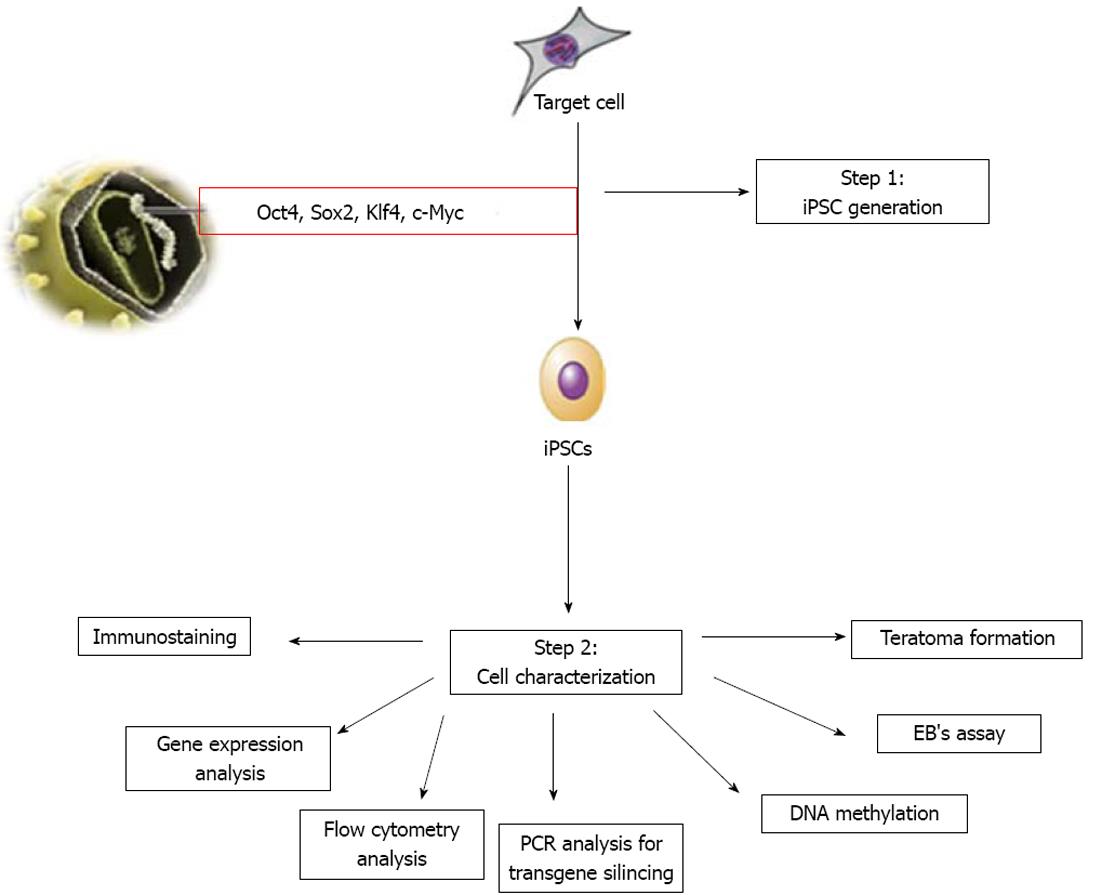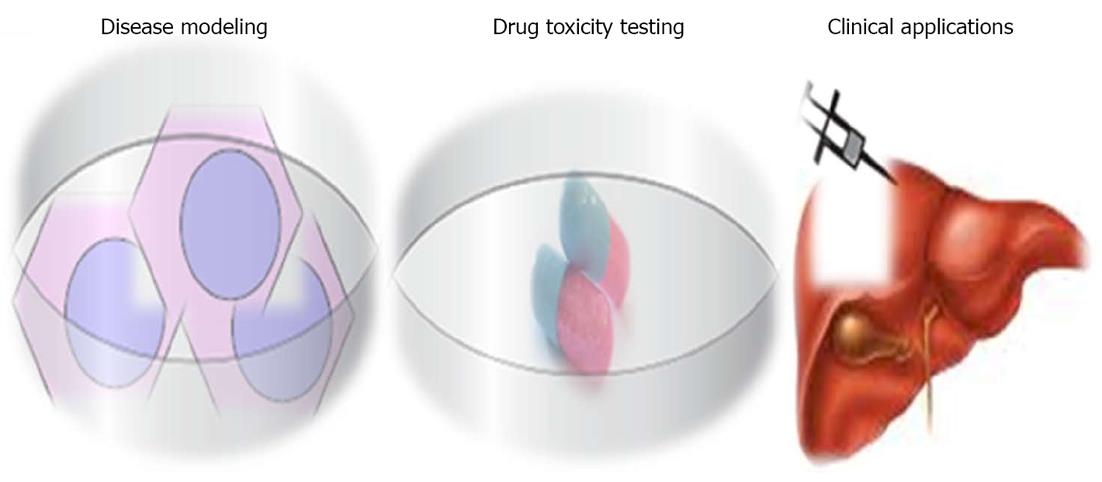Copyright
©2013 Baishideng Publishing Group Co.
World J Gastroenterol. Jun 14, 2013; 19(22): 3385-3396
Published online Jun 14, 2013. doi: 10.3748/wjg.v19.i22.3385
Published online Jun 14, 2013. doi: 10.3748/wjg.v19.i22.3385
Figure 1 Flow diagram of generation and characterization of human induced pluripotent stem cells.
Induced pluripotent stem cells (iPSCs) are derived through the introduction of stem cell factors into fibroblasts. After that, assessment of pluripotency of iPSCs can be studied by expression of protein and genes using various techniques such as immunocytochemistry, flow cytometry and reverse transcription-polymerase chain reaction (PCR) methods, respectively. In vitro and in vivo differentiation ability of iPSCs can be studied by embryoid body assay (EB assay) and teratoma formation assay, respectively. In addition, PCR analysis is required to demonstrate silencing of transgene expression in iPSCs and DNA methylation to confirm reprogramming of somatic cells. Oct: Octamer-binding transcription factor; Sox2: SRY box-containing gene 2; Klf4: Kruppel-like factor 4.
Figure 2 Flow diagram showing the strategy for human induced pluripotent stem cell-derived hepatocyte clinical applications.
Steps 1 and 2, human induced pluripotent stem cells (hiPSCs) are generated from somatic cells using reprogramming techniques and screened for mutations; Step 3, hiPSCs are differentiated into hepatocytes using specific growth factors and medium; Step 4, enrichment of hiPSC-derived hepatocytes; Steps 5 and 6, characterization of enriched iPSC-derived hepatocytes for protein expression, gene expression and functional assays. Before clinical transplantation, hiPSC-derived hepatocytes are enriched again using negative selection against pluripotent cells to avoid teratoma formation; Step 7, transplantation of enriched hiPSC-derived hepatocytes into chronic liver failure animal model; Step 8, hiPSC-derived enriched hepatocytes could be transplanted into liver disease patients. Oct: Octamer-binding transcription factor; Sox2: SRY box-containing gene 2; Klf4: Kruppel-like factor 4; ASGPR: Asialoglycoprotein receptor; FACS: Fluorescence activated cell sorting; MACS: Magnetic-activated cell sorting; ALB: Albumin.
Figure 3 Human induced pluripotent stem cells generated from human foreskin fibroblasts using single lentiviral stem cell cassette kit (Millipore, United States) method.
A, B: Human induced pluripotent stem cell (hiPSC) colonies resembling embryonic stem cells in morphology were observed, and iPSC with a flat, packed, tight colony morphology and a high nucleus to cytoplasm ratio (A, × 40) were positive for Oct4 marker on immunocytochemistry (B, × 200); C, D: hiPSCs were differentiated into hepatocytes. At day 13, these differentiated cells exhibited polygonal morphology (C, × 400) and showed pink color (glycogen storage) on periodic acid schiff staining (D, × 200).
Figure 4 Flow diagram of potential applications of induced pluripotent stem cell-derived hepatocytes.
Induced pluripotent stem cells (iPSCs) are capable of self-renewal and are able to differentiate into hepatocytes in vitro. iPSC-derived hepatocytes can be applied to disease modeling, drug toxicity screening assays, and clinical applications.
- Citation: Rao MS, Sasikala M, Reddy DN. Thinking outside the liver: Induced pluripotent stem cells for hepatic applications. World J Gastroenterol 2013; 19(22): 3385-3396
- URL: https://www.wjgnet.com/1007-9327/full/v19/i22/3385.htm
- DOI: https://dx.doi.org/10.3748/wjg.v19.i22.3385












